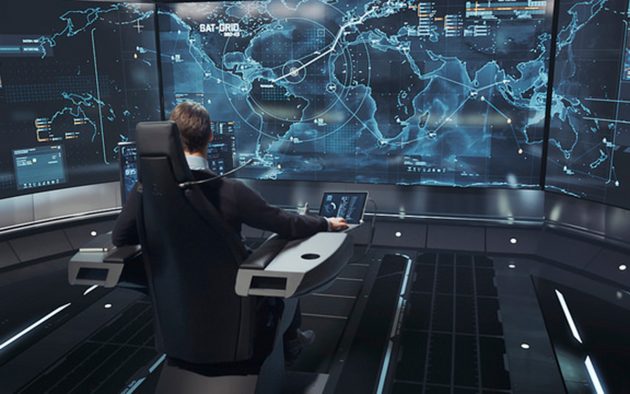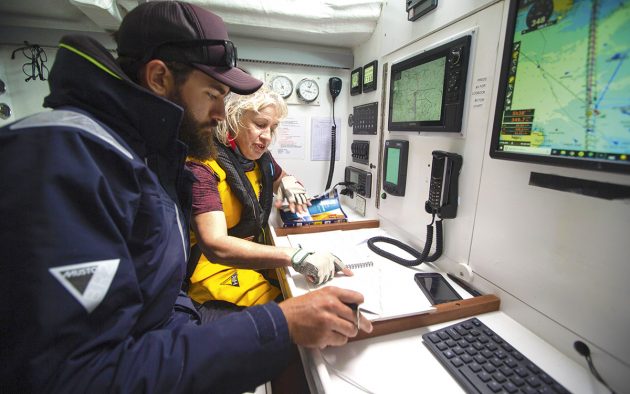Freelance RYA Yachtmaster Ocean and Instructor, Emily Caruso looks to the lessons learned by the aviation industry to improve crew safety and avoid human error
The safety and wellbeing of both crew and vessel are the primary responsibility of any skipper.
Without exception every crew leader will attest to this and yet it is nearly impossible to find a single MAIB (Marine Accident Investigation Branch) report that doesn’t attribute a safety failure to some degree of human error and breakdown in communication, sometimes with catastrophic results. So, what are we in the sailing world doing wrong?
To answer this question it pays to look at the aviation industry, which has acknowledged and addressed the impact of ‘human factors’ for almost 40 years.
With a single passenger aircraft carrying up to 800 people, eliminating error is absolutely critical in flight.
In 1981 United Airlines introduced Crew Resource Management (CRM) training, to try and improve safety by focusing on interpersonal communication, leadership and decision making in the cockpit of an airliner. The CRM model proved so successful it has since become ingrained in aviation safety culture.
Albert De Nijs is a Yachtmaster Instructor who began his career in the Dutch Navy and later became an airline pilot with KLM. He is passionate about leadership in both sectors.
“In the maritime industry, and especially in yachting, there is still the picture of the skipper with authority, who makes the decisions and does the difficult stuff alone. That’s quite different from the airline approach, where the operation is considered an integral crew effort with a lot of delegation,” De Nijs explains.

“I’m convinced that an involved crew contributes a lot to the successful outcome of any trip, sailing or flying. It isn’t a big step to make as skipper, it’s something you can easily experiment with; starting with crew briefings, asking for feedback and delegating tasks to keep the crew involved while you overview the situation and monitor progress.”
The Maritime and Coastguard Agency introduced the HELM (Human Element of Leadership and Management) programmes to their professional training portfolio in 2013, aimed at addressing the fact that 80% of maritime incidents and accidents are the result of human error.
I have co-facilitated training for the Operational Level HELM course at UKSA, the maritime training centre on the Isle of Wight.
Like the aviation industry’s CRM training, the HELM course is designed to give structure to a topic that is often subjective and to provide models and techniques that can be applied on a practical level.
Given the gravitas of the subject matter, in my experience the attitude of many in the marine industry towards HELM-style training can be frustratingly dismissive.
Leading an effective team
It takes bravery for anyone to put themselves in a position of vulnerability, which comes hand in hand with deciding to learn a new skill or to join an unfamiliar team.
It’s the role of the skipper to acknowledge the commitment made by every crewmember, and help each reach their potential.

As a freelance skipper I’m tasked with building effective teams from scratch on a regular basis. These can vary massively, but whatever the assignment, the goal is the same; to nurture a cohesive group and try to achieve the best possible experience and the outcome for all on board.
Creating the right atmosphere starts with first impressions. Forgetting names is a deal breaker. If you want the crews’ respect then the least you can do is take a moment to remember a person’s name.
Article continues below…
If you struggle with this – and lots of people do – then work on finding a method that helps you. I like to ask each crewmember to tell me something unique about themselves when we first get together. It not only helps with the process of remembering a name by association but also helps break the ice.
You also need to learn to truly listen. You might be thinking ahead through everything you need to do before you set off, but listen carefully in that introductory session and process what each crewmember tells you about who they are. Paraphrase back to them what they have said to show that you have really heard, and make sure you give everyone equal time.
Creating a set of team values will set the tone for the voyage ahead. These values should be drawn up as a group exercise and endorsed by everyone. This ‘crew charter’ provides a reference and focus when things go awry (which they will) and creates the foundation for the dynamic on board.
Record the charter in the logbook so you can refer back, and get everyone to sign it. Ground rules set by the team provide a valuable point of reference if dealing with crew conflict later on and encourage a democratic approach towards overall safety and wellbeing.
Create a framework
Have a predetermined framework in mind when setting your team values. Citing key elements such as a blame free culture promotes an environment that encourages the less vocal team players to speak up and may even result in avoiding an accident, injury or worse.
 Initially, a desire to ‘fit in’ will naturally bring out the best in everyone. The challenges begin when the group becomes comfortable with one another and less guarded. Add to this the additional pressures that come with a life at sea and cracks can begin to form. These cracks need to be addressed quickly before they threaten the integrity of the dynamic you have built together.
Initially, a desire to ‘fit in’ will naturally bring out the best in everyone. The challenges begin when the group becomes comfortable with one another and less guarded. Add to this the additional pressures that come with a life at sea and cracks can begin to form. These cracks need to be addressed quickly before they threaten the integrity of the dynamic you have built together.
Creating a culture on board that encourages feedback without reproach is essential for ironing out issues as the team continues to evolve.
Empower the crew
We all have a natural default style of leadership but a good skipper will adjust their style based on the situation.
In a crisis we need an authoritarian style with specific instruction and guidance. There isn’t time for democracy when there’s a fire on board. Conversely, when developing a team member in a normal day to day scenario then a more participative style may work better, asking questions and encouraging them to think for themselves.
When a crewmember demonstrates full capability it isn’t productive to micro-manage them. Instead simple direction will generate a mutual respect. Responsibility can be a powerful motivational tool in the right circumstances.
A culture of crew safety
Why is all this important? You need your crew to feel empowered so they’re confident in reporting safety concerns or mistakes, even when there has been no incident, without fear of repercussions. This can only happen in a no-blame culture, or what is referred to in the airline industry (among others) as a just culture.

“A just culture is where people are encouraged and feel able to report incidents because they know they will not be blamed/reprimanded for honest mistakes,” explains Rachael Best, from the UK’s NATS air traffic control training centre.
Following the introduction of pilot and crew CRM courses, the air traffic control sector also adopted their own ‘human factor’ training.
“This [taught] us all that no matter what your position was in the team, everyone’s role and opinion was equally vital and important. This made it much easier for everyone to challenge behaviours and decisions.
“We looked at the Jim Reason ‘swiss cheese’ model, i.e. if one small error is left, then another and another, this can lead to a major safety incident or accident.
“We are all trained to pick each other up on the smallest errors with no issues taken or inferred. Reporting of any safety issue is critical, with notices then sent out for the lessons learned – usually very quickly. This is common practice in aviation.”
Albert De Nijs believes the sailing world will benefit from adopting this mindset: “There is a big difference in safety culture between the maritime industry and the airline business.
“After a maritime accident there is talk of blame and the possibility of prosecution. In airline flying you can only be prosecuted after wilful misconduct or gross negligence, not for making a mistake – however disastrous the outcome.”
When all errors are openly discussed, it reduces the chances of the same mistake recurring. “The aim is to find out what went wrong, why it happened, and to act to prevent it happening again. If one person makes a mistake, the same thing could almost certainly happen to anyone else,” says De Nijs.
“People should feel safe to report issues that may implicate themselves, in order to improve the system. For example, suppose a watchleader falls asleep during his watch. If nothing happens, this will (most likely) not be reported. If an incident happens while the watchleader is napping, there will be serious consequences. But the situation is the same: the person on watch was not alert.
“The underlying reason could be almost anything but, if not reported, the system cannot learn and similar situations are not avoided.”
 If you enjoyed this….
If you enjoyed this….
Yachting World is the world’s leading magazine for bluewater cruisers and offshore sailors. Every month we have inspirational adventures and practical features to help you realise your sailing dreams.Build your knowledge with a subscription delivered to your door. See our latest offers and save at least 30% off the cover price.





